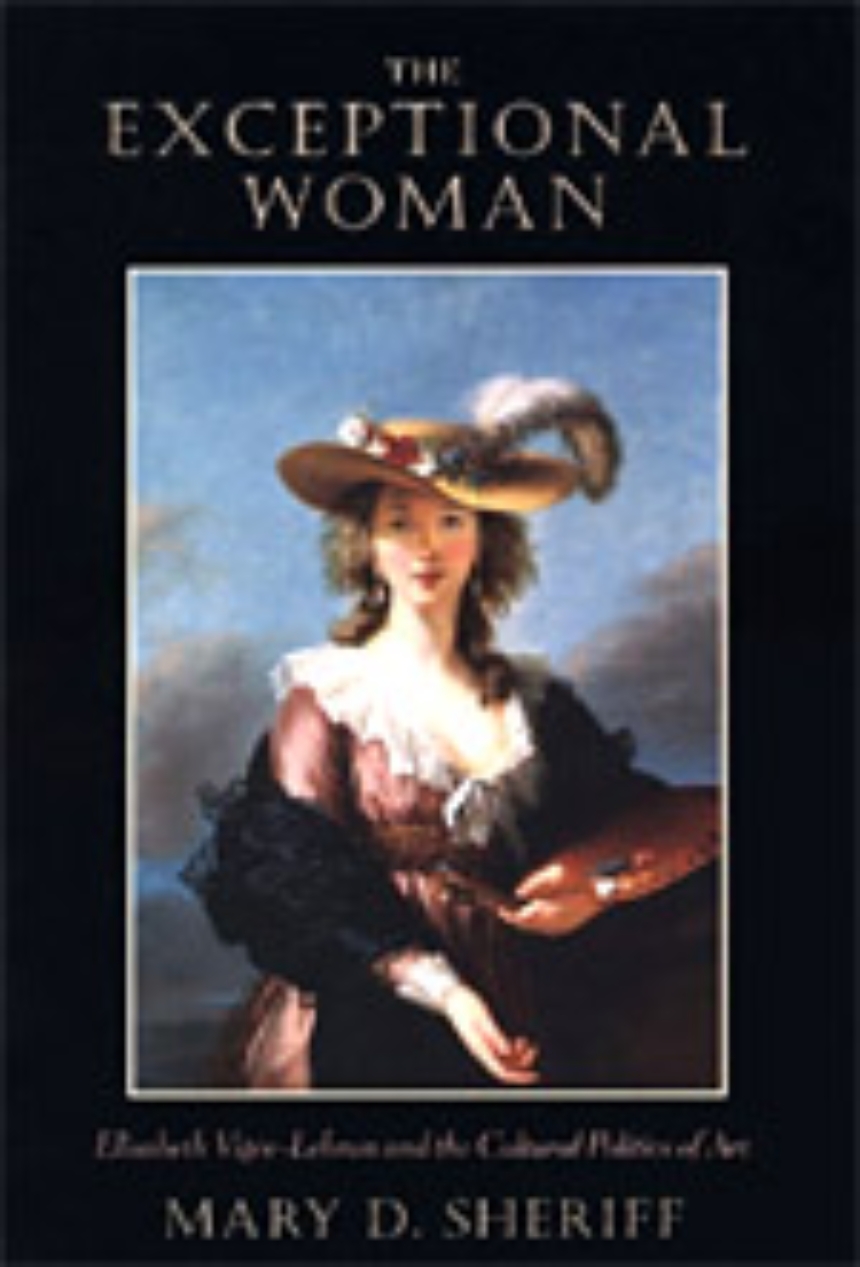The Exceptional Woman
Elisabeth Vigee-Lebrun and the Cultural Politics of Art
Elisabeth Vigée-Lebrun (1755-1842) was an enormously successful painter, a favorite portraitist of Marie-Antoinette, and one of the few women accepted into the Royal Academy of Painting and Sculpture. In accounts of her role as an artist, she was simultaneously flattered as a charming woman and vilified as monstrously unfeminine.
In The Exceptional Woman, Mary D. Sheriff uses Vigée-Lebrun’s career to explore the contradictory position of "woman-artist" in the moral, philosophical, professional, and medical debates about women in eighteenth-century France. Paying particular attention to painted and textual self-portraits, Sheriff shows how Vigée-Lebrun’s images and memoirs undermined the assumptions about "woman" and the strictures imposed on women.
Engaging ancien-régime philosophy, as well as modern feminism, psychoanalysis, literary theory, and art criticism, Sheriff’s interpretations of Vigée-Lebrun’s paintings challenge us to rethink the work and the world of this controversial woman artist.
In The Exceptional Woman, Mary D. Sheriff uses Vigée-Lebrun’s career to explore the contradictory position of "woman-artist" in the moral, philosophical, professional, and medical debates about women in eighteenth-century France. Paying particular attention to painted and textual self-portraits, Sheriff shows how Vigée-Lebrun’s images and memoirs undermined the assumptions about "woman" and the strictures imposed on women.
Engaging ancien-régime philosophy, as well as modern feminism, psychoanalysis, literary theory, and art criticism, Sheriff’s interpretations of Vigée-Lebrun’s paintings challenge us to rethink the work and the world of this controversial woman artist.
Table of Contents
List of Illustrations
Acknowledgments
Introduction
PART ONE- The Anatomy Lessons of Elisabeth Vigèe-Lebrun
1. The Sense and Sex Organs
2. The Mother’s Imagination and the Fathers’ Tradition
PART TWO- Elisabeth Vigèe-Lebrun in 1783
3. The Law, the Academy, and the Exceptional Woman
4. The Im/modesty of Their Sex: The Woman’s Gaze and the Female History Painter
5. The Portrait of the Queen
6. The Portrait of the Artist
PART THREE- Staging Allegory
7. Elisabeth, or Italy
8. Germaine, or Corinne
Epilogue
Notes
Selected Bibliography
Photographic Credits
Index
Acknowledgments
Introduction
PART ONE- The Anatomy Lessons of Elisabeth Vigèe-Lebrun
1. The Sense and Sex Organs
2. The Mother’s Imagination and the Fathers’ Tradition
PART TWO- Elisabeth Vigèe-Lebrun in 1783
3. The Law, the Academy, and the Exceptional Woman
4. The Im/modesty of Their Sex: The Woman’s Gaze and the Female History Painter
5. The Portrait of the Queen
6. The Portrait of the Artist
PART THREE- Staging Allegory
7. Elisabeth, or Italy
8. Germaine, or Corinne
Epilogue
Notes
Selected Bibliography
Photographic Credits
Index
